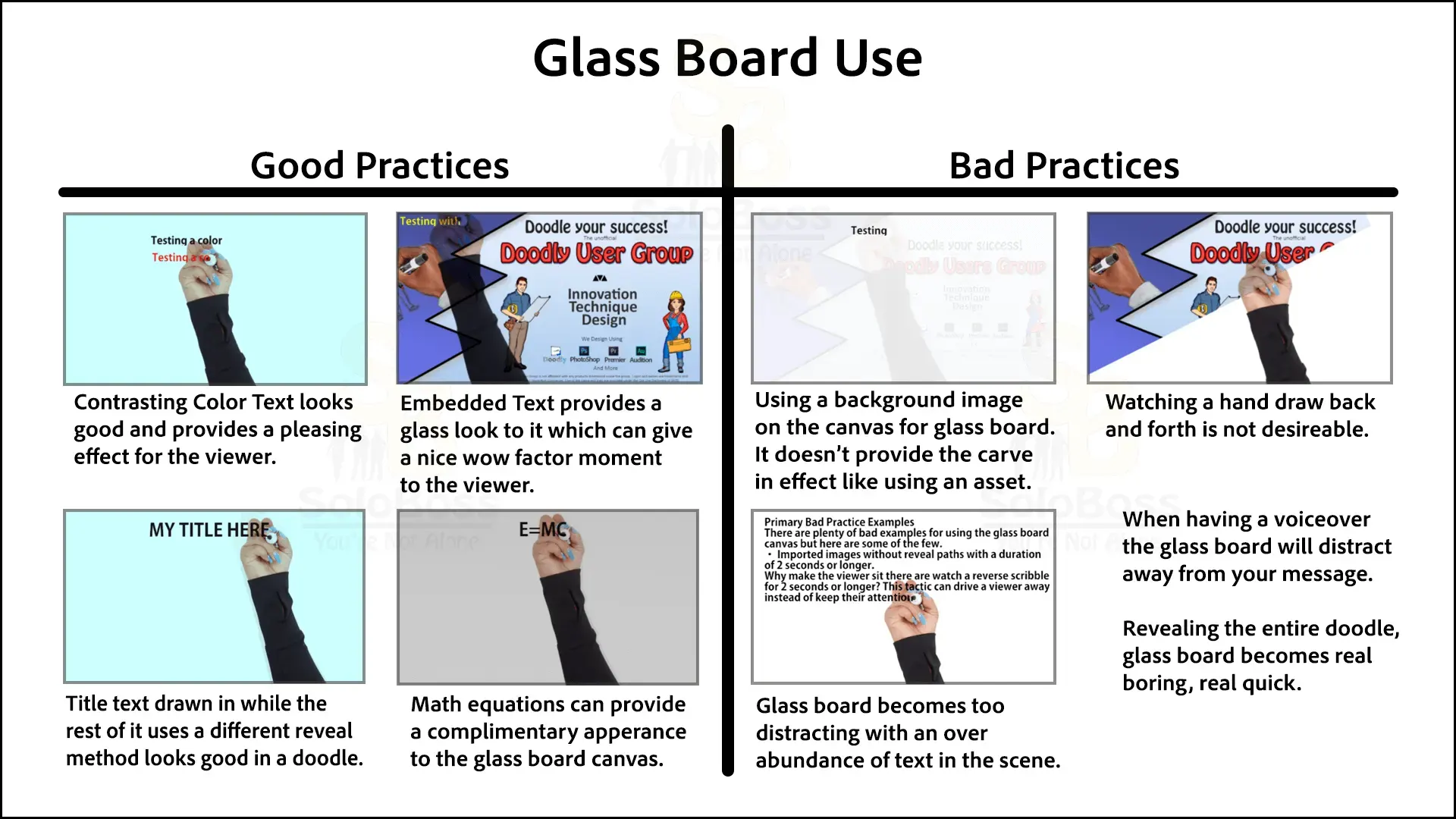Glass Board Use
This article explains the best method and uses of the Glass Board canvas and provides examples of when not to use it.
Note: We all love the glass board. We really like the effect but ask yourself are you trying to get the effect over to the user or are you trying to get your message to them. The glass board tends to be really distracting from your message.
Primary Bad Practice Examples
There are plenty of bad examples for using the glass board canvas but here are some of the few.
- Imported images without reveal paths with a duration of 2 seconds or longer.
Why make the viewer sit there are watch a reverse scribble for 2 seconds or longer? This tactic can drive a viewer away instead of keep their attention. - The entire doodle
The effect of entire doodle that is longer than 2 minutes of consistently watching a hand behind the glass reveal assets will like drive a viewer away than keep their attention. - Asset reveal
This is very distracting and will likely take away from your message than enhance it. - When a voiceover is present
The glass board takes the focus of the viewer immediately. Do you want the focus to be your voiceover or to be the character that are being revealed? - With an absorbent amount of text
It is best to not use the glass board canvas when having a lot of text in the doodle. At this point, we want the focus to be on the text and not the hand revealing it. The glass board will have the opposite effect by taking the focus away from the text. - Using an image background as the canvas
Unless it is a solid color, some images, even though 1920 X 1080, do not work while other images can appear very faded. It is better practice to use an asset as a full canvas image at this time.
Best Practice Use
- Revealing Mathematical Equations
The glass board is a perfect canvas for revealing mathematical equations. The equations keep the focus away from the reveal hand and the glass board compliments them quite well. - Text Embedding
This is the practice of embedding text into an image. Seeing an image and having a hand come from behind it and carve text into that image is quite impressive to the viewer and is sure to keep your viewers attention and add to that WOW factor. - Title Text
When your scene has a title on it, using the Glass Board just for the title only for a scene while using a different hand for revealing the other items is a really nice method for keeping a viewers attention. - Background Color
Using a background color as an asset will allow for a nice burn into the color feature when using contrasting colors.
Read Intermediate Skill Level Doodly Tutorial #21: Using Contrasting Colors
Note: Using an all black color, or lack of color for those technilites out there, doesn’t work well with the Glass Board canvas unless the opacity is set to 60%. Any color in the spectrum and white appear to work just fine.



